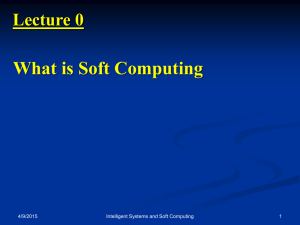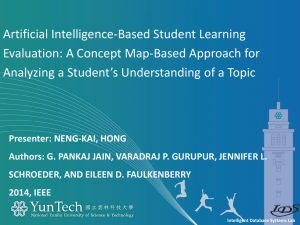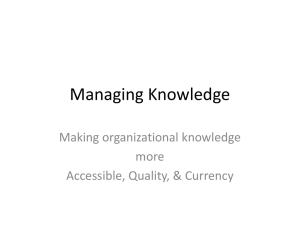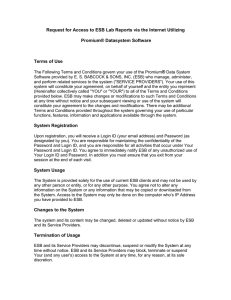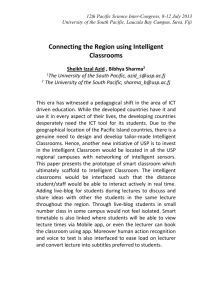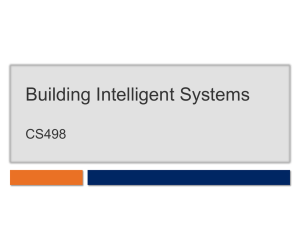Intelligent Highways Infrastructure
advertisement
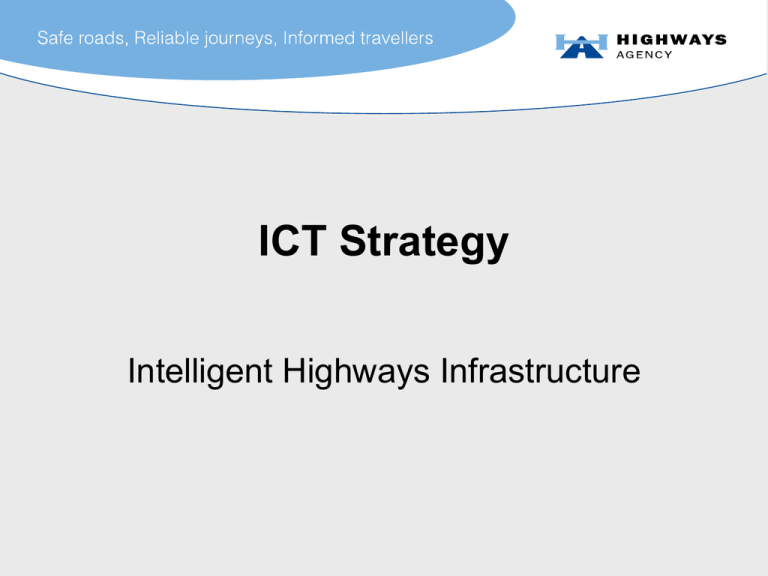
ICT Strategy Intelligent Highways Infrastructure DfT Drivers EXTERNAL INFLUENCES DfT System of Systems Foresight Intelligent Infrastructure Futures NTDF, NaTII, Information Framework, RIF System of Systems Agile Infrastructure Wider role of Intelligent Transport Systems Spatial Planning – Land Use and Transport Impacts Data structures, consistency and availability Modelling, simulation, assumptions, forecasts, scenarios Foresight IIS – Changing Presumptions Past Present Future Strategic Traffic Management Legend • • CVHS - Cooperative Vehicle Highway Systems EVI - Electronic Vehicle Identification Intelligent Vehicles EUROPEAN ITS DEVELOPMENTS Continuous Air-interface for Long- and Medium-range communications (CALM) European ITS Communication Architecture - Components ITS Station Reference Architecture Co-operative Vehicle Infrastructure System (CVIS) TPEG - Content and Delivery Segment Deployment View RSU - Road Side Unit Integration View 3GRSE THIRD-GENERATION ROADSIDE EQUIPMENT Context Diagram Typical Architecture Diagram Portuguese Integration Model THE ITSIBUS APPROACH ITSIBus and SOA • Uses an Enterprise Service Bus (ESB) for integration middleware – in production since 2004. • • • Everything as a service • A functional component in ITSIBus is always a service • A service implements an open interface and generates subscribe-able events (by other services) Services run on Systems • Systems are service execution containers offering core services for common functions (e.g. security, management, monitoring) Services are available from multiple technologies • Being standard, services can be called from different technologies. Architecture Strategic implications HA TO-BE ARCHITECTURE Intelligent Highways Infrastructure • • Adopts Portuguese ESB model as an exemplar. Federated ESB approach fits with OGD and EU developments – Defra (INSPIRE), Police (ISS4PS), Customs & Excise (XSIZE), etc. Legacy Integration • Smart endpoints provide an abstraction layer for “Encapsulation”: • Java, C++, DCOM, CORBA • Adapters (e.g. JCA – J2EE Connector Architecture) Conclusions • The Intelligent Highways Infrastructure requires future-proofed ESB Endpoints which need to include RSU’s that can accommodate: • Legacy transponders • 3GRSE-based Data Hubs • CVHS-based Roadside Gateways • These need to be based on: • Industry standards (e.g. UTMC/Datex II) • Ruggedised PC hardware • IPv6 network interfaces/addressing






